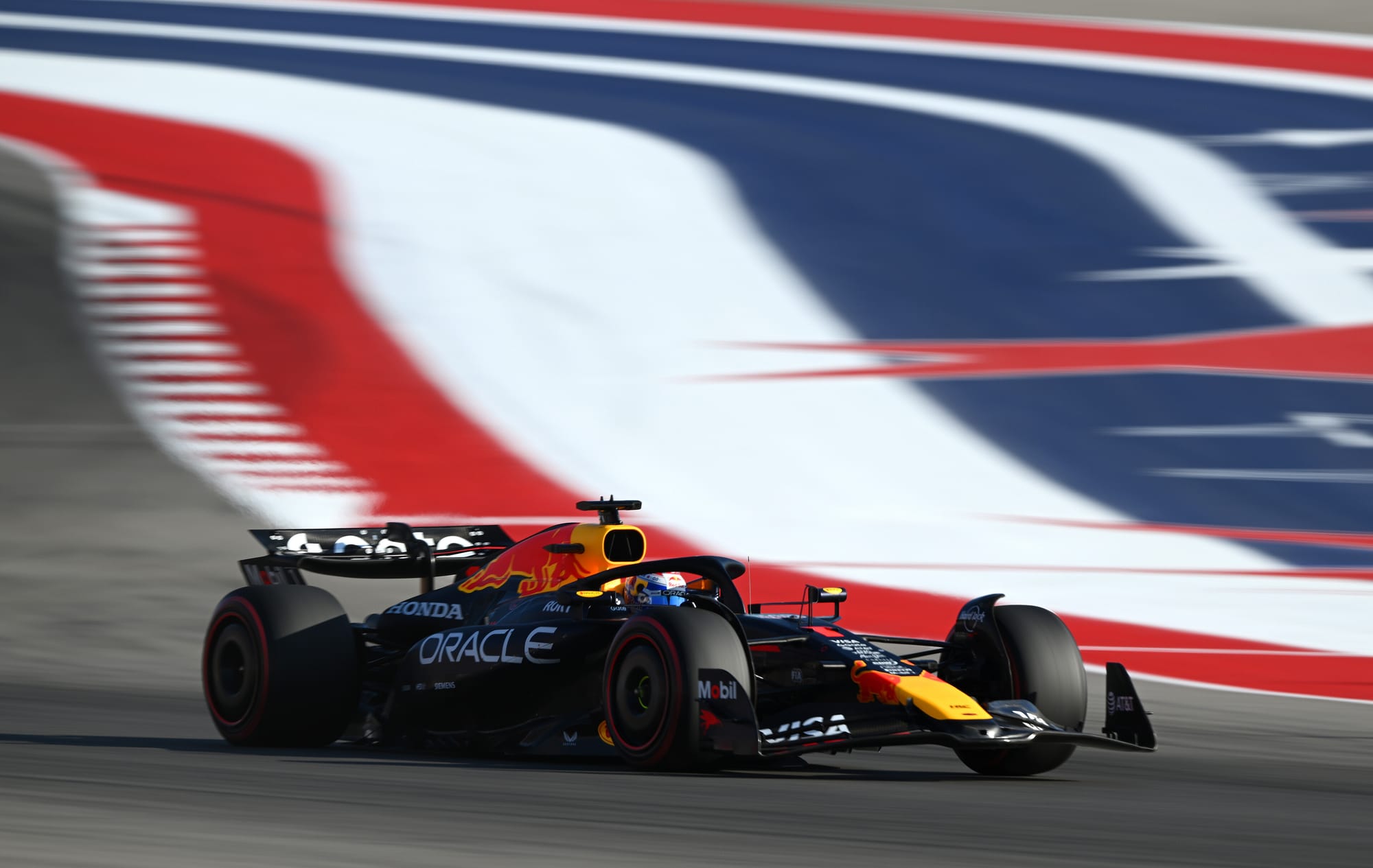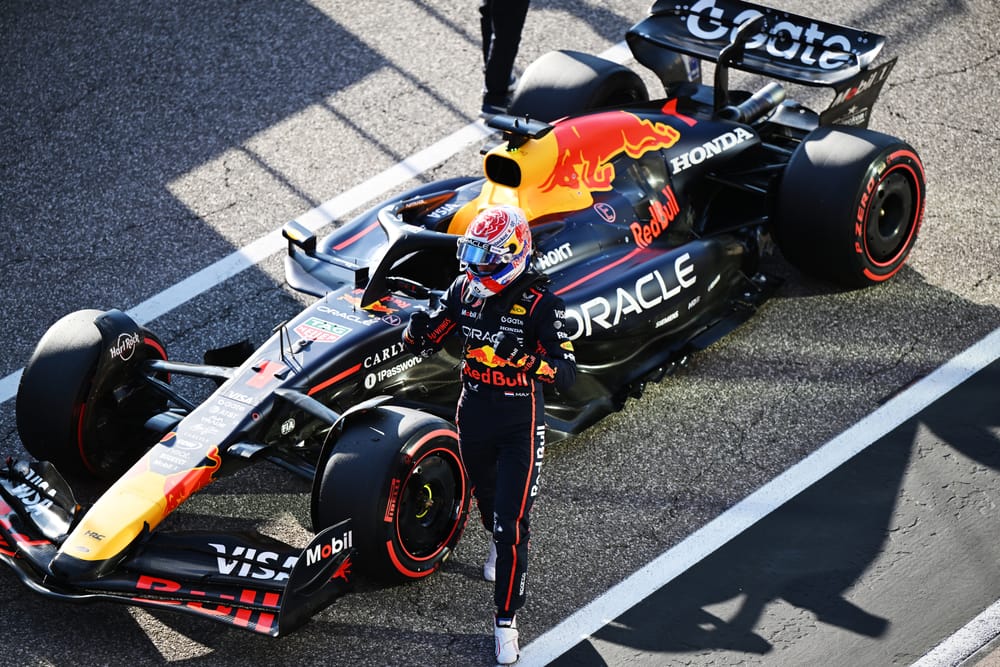OK, so McLaren is behind the curve after a disastrous Turn 1 in the sprint race took out both cars, and so the picture we see in United States Grand Prix qualifying of another Max Verstappen pole - but a more resounding one than on Friday, taken by a margin of 0.291 seconds over Lando Norris - is probably slightly skewed.
But the question now poses itself of whether the Red Bull, with its aero reconfigured around the upgraded front wing first seen at Zandvoort, is now actually just outright quicker than McLaren?
Sure, there was a Verstappen factor in the difference. He was at his brilliant best in improvising his way around the very different, much windier, conditions of Saturday compared to Friday at Austin. His pole margin was almost four times as big as in sprint qualifying.
It was also about the lack of references for the McLaren drivers around a track in which full confidence is essential through the high-speed first sector. Because they'd not got past Turn 1 in the sprint and Verstappen, George Russell and the others had 19 laps of sprint race experience of the new conditions - with a more powerful wind which had turned through 90 degrees. You really saw how much more tentative Norris and Oscar Piastri were in Q1, when that discrepancy in references was at its biggest.
"There were also a few pieces of missing data in terms of the car and how we optimised it," said McLaren team pricipal Andrea Stella. "When you run continuous laps you learn about how you can optimise your car and with this generation of car, if you can find that you can run just 1mm lower that's a significant amount of milliseconds of laptime. So we had to be more conservative in the set-up without those laps.
"But the difference wasn't pole. We are maybe 0.2s away in reality. I think at this point of the season and on the sort of circuits we are now at, Red Bull-Verstappen is just a faster combination than our car.
"If we see the gap to Verstappen, and it's measurable in tenths of a second, and I think at least two tenths is a fair gap that we have today to Red Bull. I think we have to admit that at the moment, Verstappen and Red Bull are the most competitive car up to a certain point.
"We talked about the impact of the track layout, and I think this is true in Baku, it's true in Singapore, and to some extent, it's true in Austin. But the gaps we are experiencing now to Verstappen, they can't only be ascribed to the track layout. I think it's clear that Red Bull have taken a step forward, and on our side, we need to look at how we can extract more out of the package."
So the lack of sprint running possibly cost a few hundredths in set-up, the big impact upon driver confidence around a confidence track was worth tenths. But that still leaves a shortfall - and that does seem to be a car difference, one which Verstappen brilliantly exploits.
The Red Bull RB21 has always been the fastest car through fast corners. Its aero map is configured around the lowest ride heights. That advantage is at its greatest on low fuel/new tyres of qualifying. Even when the cars are raised as required for the myriad bumps of this place, that advantage remains.

Since its flexi wing and new floor combination, it can run lower and with a balance through a fuller range of corner speeds. Verstappen was raving about it on Friday, saying that the rear felt so much more planted than earlier in the season, such that he was able to add more front grip from that powerful wing and still have the balance.
He was slightly less enamoured with it on Saturday. Even after winning the sprint race, he felt unsure he could have held off the McLarens if they'd made it through Turn 1. But although it felt far worse to him than on Friday, it was clearly less so than for the others.
"It was very challenging," said Verstappen, "because the tailwind in the first sector made it very tricky. It was a tailwind into the [seventh-gear] Esses, and that was moving the car about. You just couldn't commit as much as yesterday."
His pole time, although 0.3s clear of anyone else despite only one Q3 run (he didn't get to the line in time to begin another), was 0.367s slower than that of Friday.
The first clue as to the peril of the more powerful wind through the seventh-gear turns came immediately in Q1 as Isack Hadjar began his first qualifying lap, the Racing Bulls spinning at high speed on the exit of Turn 5 and crunching hard into the barrier.
Norris did well to claw himself back as far as he did in the circumstances, though he shaded Charles Leclerc's Ferrari and George Russell's Mercedes only by a matter of hundredths. Piastri was less successful around what is something of a bogey track for him.
Consistently a couple of tenths off Norris, he landed in sixth, behind Lewis Hamilton's Ferrari. His losses to his team-mate were through those Esses - that and a small lock up into Turn 11 accounting for the difference.
The need to commit through the wild windy ride of the Esses combined with the McLaren drivers' lack of running just exaggerated Verstappen's advantage. Over a single lap, at least. McLaren hopes that its excellent control of thermal degradation of the rear tyres will give it an advantage on race day.
But it is only a hope, less of a certainty than before Red Bull got itself onto this super-productive development path.



